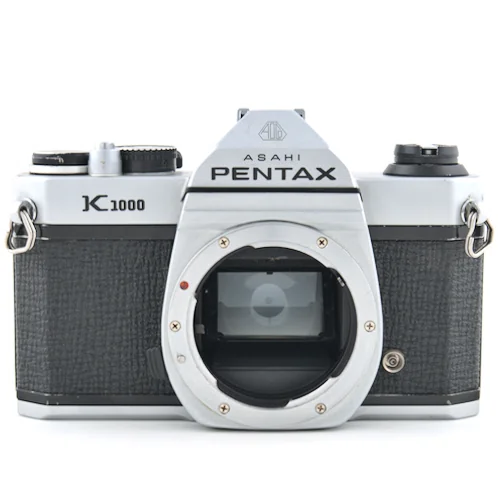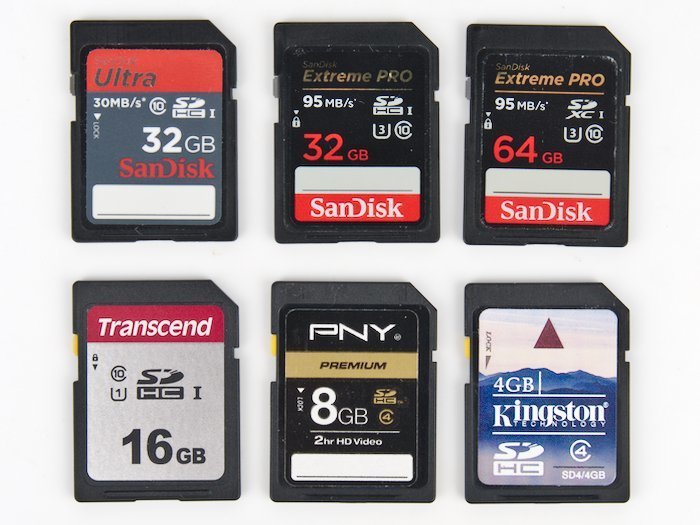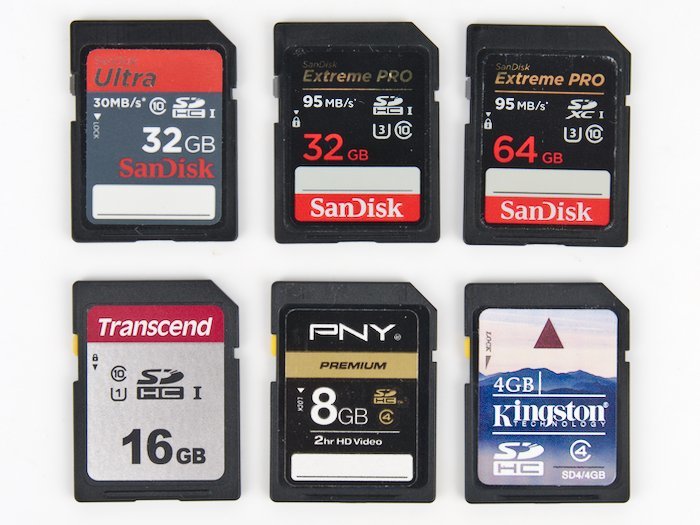
An Overview of The Pentax K-Mount: History & Compatibility
- Nathaniel Stephan
- Pentax k mount
- September 5, 2023
Table of Contents
The Pentax K-mount has been in use since 1975. It’s a bayonet-style mount originally designed for 35mm film SLRs.
Pentax is still releasing DSLRs that use the K-mount. This can lead to compatibility problems as there have been significant modifications to the mount to allow for autofocus and electronic controls.
Different Versions of the K-mount
As cameras added features and technology, lenses and the camera mount needed to be modified. Early autofocus systems and electrical contacts are the easiest differences to see.
1. Original K-mount
- A three tab bayonet connection launched with K series cameras.
- Mechanical linkage to communicate aperture for open-aperture metering.
- Supported by K series, M series (except ME F), and LX cameras.
2. KF-mount
- Pentax’s first attempt at an autofocus system.
- Only one camera and one lens used this mount: Pentax ME F and SMC Pentax-AF 35-70/2.8.
3. KA-mount
- Adds aperture priority mode.
- Introduced in 1983 and supported by A-series and P-series bodies.
4. KAF-mount
- An attempt at adding auto-focus to lenses.
- Introduced a small drive shaft to the KA-mount. (Similar to Nikon F-mount lenses of the time.)
5. KAF2, KA2, KAF3, and KAF4-mounts
- Added electrical contacts for digital communication with a camera body. Removes the physical linkage used to set maximum aperture information.
- Bodies lose open-aperture metering and will need to use stop-down metering on pre-A lenses. This is done by pressing the green button.
6. R-K-mount
- A variation by Ricoh for Rikenon P lenses. It supports Ricoh’s implementation of shutter priority and auto exposure metering modes.
K-Mount Specifications
https://www.outsidetheshot.com/smc-pentax-m-50mm-f2-k-mount-lens.webp does not existThe Pentax K-mount is a bayonet style lens mount with 3 tabs for mounting. Originally designed to be used on 35mm SLRs. It is similar in appearance to the Nikon F-mount and Minolta MD-mount.
Later versions of the lens mount had electrical contacts and a drive shaft for autofocus added. The drive shaft would connect to an autofocus motor inside a camera body.
Lens Mount Adapter Compatility
The flange focal distance is 45.46 mm. This is the same distance as the M42 mount. This was done so that Pentax M42 lenses, used on cameras like the Spotmatic, could be used on K-mount cameras with a lens adapter.
However, due to the relatively large flange distance for a 35mm SLR camera, Pentax K-mount lenses cannot be easily adapted to other SLR or DSLR cameras. There are K-mount lens adapters for all mirrorless camera mounts.
Mirrorless cameras are ideal as autofocus and electronic features will not work. The adapted lens will have to be used in manual mode or aperture priority. If the lens doesn’t have a physical aperture ring, you will not be able to change the aperture.
There are some adapters that have glass optics to allow for focus to infinity. The optics are to compensate for the lens being further away from the imaging plane than it was designed for. Unfortunately, the optics are of poor quality, which greatly reduces image quality.
Film Cameras
K Series
- K2 (1975–1980)
- K2 DMD (1976–1980)
- KX (1975–1977)
- KM (1975–1977)
- K1000 (1976–1997)
M Series
- ME (1976–1980)
- MX (1976–1985)
- ME Super (1979–1984)
- MV (1979–1982)
- MV1 (1979-1982)
- ME F (1981–1988)
- MG (1982–1985)
LX
- LX (1980–2001)
A Series
- Super A / Super PROGRAM (1983–1987)
- Program A / Program PLUS (1984–1988)
- A3/A3000 (1985–1987)
P Series
- P5/P50 (1986–1989)
- P3/P30 (1985–1988)
- P3n/P30n (1988–1990)
- P30t (1990–1997)
SF Series
- SFX/SF1 (1987–1989)
- SFXn/SF1n (1989–1993)
- SF7/SF10 (1988–1993)
Z Series / PZ Series
- Z-10 (1991)
- Z-1 (flagship model) (1991)
- Z-20 (1992)
- Z-50 (1992)
- Z-1P (flagship model) (1994)
- Z-5P (1994)
- Z-70 (1995)
MZ/ZX Series
https://www.outsidetheshot.com/pentax-zx-50-film-slr-camera.webp does not exist- MZ-S (Flagship model)
- MZ-3
- MZ-5 MZ-5n
- MZ-10
- MZ-7
- MZ-6/ZX-L
- MZ-M
- MZ50
- MZ30
- MZ60
*ist Series (Film)
- *ist (2003–2006)
Digital Cameras
https://www.outsidetheshot.com/pentax-k100d-dslr-with-pentax-da-zoom-lens.webp does not exist*ist Series (Digital)
- *ist D Flagship model (2003–2006)
- *ist DS (2004–2005)
- *ist DS2 (2005–2006)
- *ist DL (2005–2006)
- *ist DL2 (2006)
K Series Digital
- Pentax K100D (2006–2007)
- Pentax K110D (2006–2007)
- Pentax K10D (2006–2008)
- Pentax K10D Grand Prix (limited edition) (2007)
- Pentax K100D Super (2007–2008)
- Pentax K200D (2008–2009)
- Pentax K20D (2008–2009)
- Pentax K-m (Pentax K2000 in U.S.) (2008–2009)
- Pentax K-7 (2009–2010)
- Pentax K-x (2009–2011)
- Pentax K-r (2010–2012)
- Pentax K-5 (2010–2012)
- Pentax K-01 (2012–2013)
- Pentax K-30 (2012–2013)
- Pentax K-5 II (2012–2014)
- Pentax K-5 IIs (2012–2014)
- Pentax K-50 (2013–2016)
- Pentax K-500 (2013–2014)
- Pentax K-3 (2013–2015)
- Pentax K-S1 (2014–2016)
- Pentax K-S2 (2015–present)
- Pentax K-3 II (2015–2018)
- Pentax K-1 (2016–2018)
- Pentax K-70 (2016–2022)
- Pentax KP (2017–2021)
- Pentax K-1 II (2018–present)
- Pentax K-3 III (2021–present)
- Pentax KF (2022–present)
Third Party Cameras Using the K-mount
Numerous cameras have utilized the K-mount over the years. Some notable ones include:
| Chinon | ||
|---|---|---|
| CE-4 | CE-4s | CA-4 |
| CA-4s | CM-4 | CM-4s |
| CE-5 | CG-5 | CM-5 |
| CP-5 | CP5s | |
| CP-6 | CP-X | |
| CP-7m | CM-7 | |
| CP-9AF |
| Cosina | ||
|---|---|---|
| C1 | C1s | CE-4 |
| CE-4s | CE-5 | CS-2 |
| CS-3 | CT-1A | CT-1G |
| CT-4 | CT-7 | CT-9 |
| CT-10 | CT-20 |
| Exakta | ||
|---|---|---|
| HS-1 | HS-2 | HS-4 |
| HS-10 | HS-40 | KE 5 |
| Miranda | ||
|---|---|---|
| MS-1 | MS-2 Super | MS-3 |
| Porst Compact Reflex OC | Porst Compact Reflex OCN |
| Ricoh | ||
|---|---|---|
| KR-5 | KR-5 Super | KR-5 Super II |
| KR-5 III | KR-10 | KR-10 Super |
| KR-10M | KR-30sp | XR-1 |
| XR-1s | XR-2 | XR-2s |
| XR-500 | XR500 auto | XR-6 |
| XR-7 | XR-10 | XR-P |
| XR-20sp | XR-Solar | XR-M |
| XR-F | XR-P | XR-S |
| XR-X | XR-X 3PF |
| Sears | ||
|---|---|---|
| KS-1000 (Ricoh XR-1) | KS-500 (Ricoh XR-500) | KS Auto (Ricoh XR-2S) |
| KS-1 | KS-2 (Ricoh XR-7) | KSX (Ricoh KR-10) |
| KSX-P (Chinon CP-5) | KS Super | KS Super II |
| Vivitar | ||
|---|---|---|
| V635 | V4000 | V3800N |
| V3000N | V3000s | V2000 |
| XV1 (rebadged Cosina CT-1) | XV20 (rebadged Cosina CT-20) |
Pentax K-Mount Lenses
There had to be a better solution than what’s below. You shouldn’t have to start a research project to figure out the compatibility of a lens and camera combination.
This is not a customer friendly process. I am sure this is one of the reasons that has contributed to Pentax having a small share of the camera market.
Table of K-Mount Lens Variations:
| Series | Prime Lenses | Zoom Lenses |
|---|---|---|
| K series | 34 | 7 |
| M series | 22 | 8 |
| A series | 19 | 11 |
| F series | 7 | 10 |
| FA series | 12 | 17 |
| D FA series | 3 | 5 |
| DA series | 4 | 18 |
| DA Limited | 10 | 1 |
| DA* series | 3 | 4 |
K-Series Lenses (Pre-A)
- The first generation of Pentax K-mount lenses.
- Not officially referred to as K series lenses but are often designated as such to distinguish them from later K-mount lenses.
- Exclusively manual focus lenses with no electronic features.
- Name starts with either upper case “SMC” or lower case “smc”, representing the Super-Multi-Coated lens coating.
M-Series Lenses (Pre-A)
- Followed the K series lenses.
- Manual K-mount lenses without electronic features.
- Generally smaller in size to match compact camera bodies like the Pentax MX and Pentax ME Super.
SMC Pentax-A Lenses
- Introduced “automatic” aperture settings.
- Had an aperture ring but also an “A” mode, allowing the camera to control the aperture automatically.
SMC Pentax-F Lenses
- First autofocus lenses for Pentax.
- Screw-drive type autofocus.
- Featured an aperture ring for manual control.
SMC Pentax-FA Lenses
- Designed for full-frame film SLR cameras.
- Screw-drive type autofocus.
- Introduces power zoom lenses.
SMC Pentax-FA-J Lenses
- No aperture ring.
SMC Pentax-D FA Lenses
- Coated for digital cameras but also support older 35mm camera formats.
- Some are weather resistant.
- Some lenses have aperture rings and others don’t.
SMC Pentax-DA Lenses
- Designed for Pentax digital cameras with an APS-C digital sensor.
- No aperture ring.
SMC Pentax-DA-L Lenses
- Lighter and cheaper versions of DA series zoom lenses.
- No aperture ring.
DA* Lenses
- Higher quality optics and better weather sealing.
- No aperture ring.
DA Limited Lenses
- High-quality prime lenses with metal housing.
- Compact in design.
- No aperture ring.
Third Party K-Mount Lenses
Some notable third party K-mount lenses include:
- Access: 28 mm f2.8 P-MC Macro, 75–300 mm f5.6 PMC Zoom.
- Angenieux: 70–210 mm f3.5.
- Agfa: Agfa Color 50 mm f1.4.
- Arsat: PCS Arsat 35 mm f2.8 Shift Lens.
- Carl Zeiss Jena: 20 mm f4, 28 mm f2.8, 70–210 mm f4.5, 75–300 mm f4.5-5.6 ED IF MC Macro.
- Carl Zeiss: Introduced a line of lenses for the K-mount in 2008.

